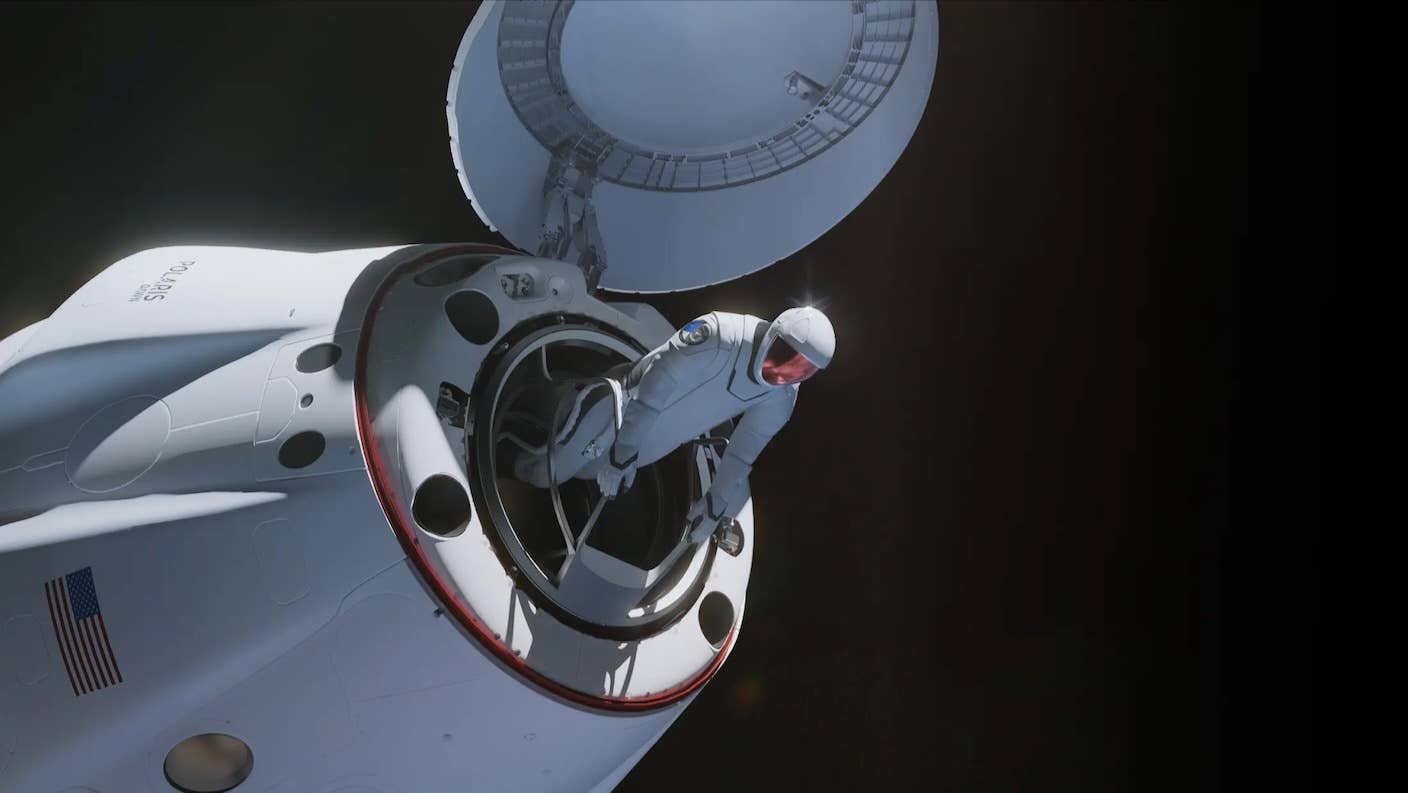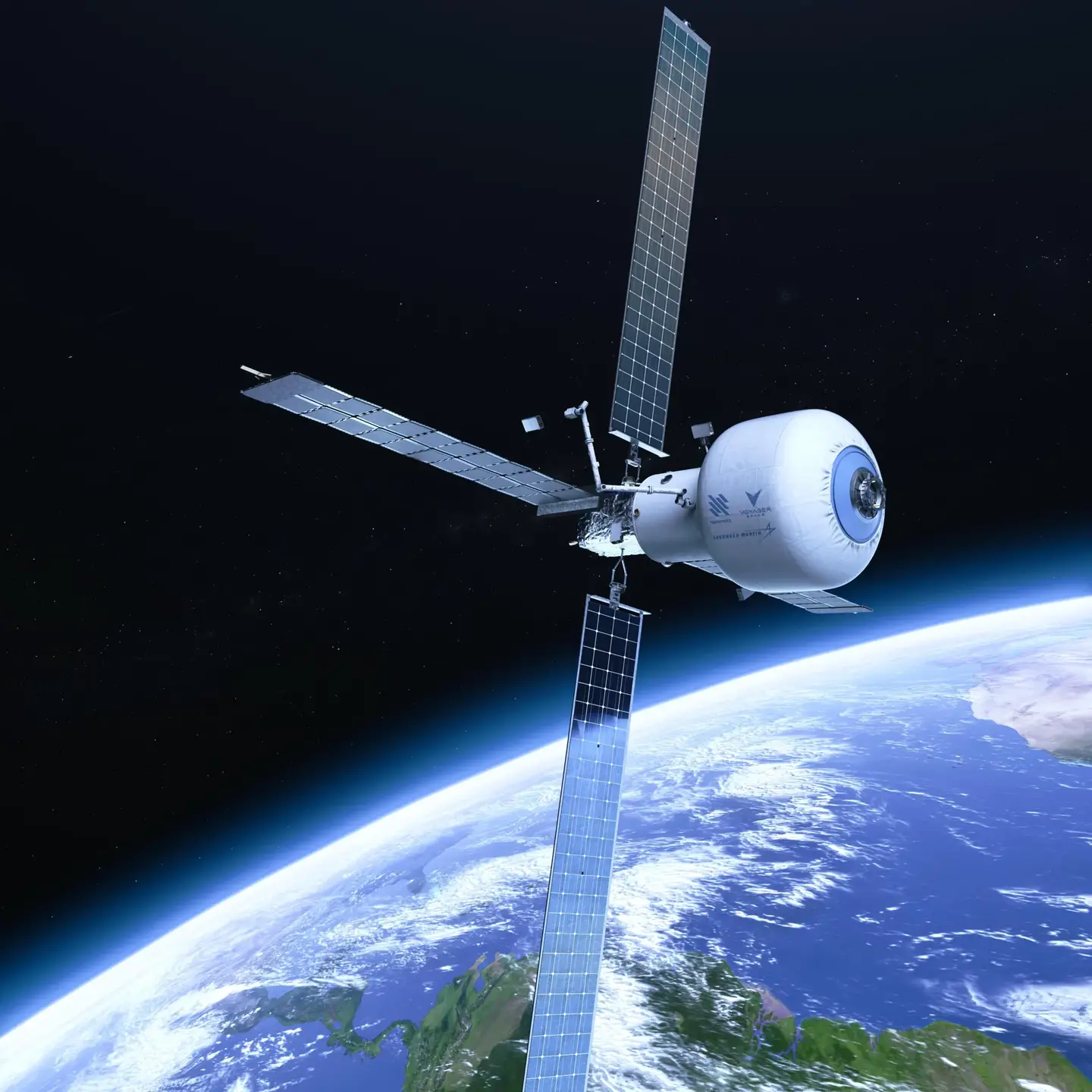The SpaceX Polaris Dawn Mission Will Show Us How Spaceflight Transforms the Body

Share
On Aug 27, all eyes will be on NASA’s Kennedy Space Center in Florida for a historic flight.
SpaceX’s Falcon 9 rocket is set to propel the Dragon crew capsule and four private astronauts into space. The Polaris Dawn mission will fly to the highest altitude yet recorded in commercial spaceflight. It’ll also be the first to traverse belts of dangerous radiation surrounding Earth and attempt a spacewalk by private citizens, rather than highly trained astronauts.
Meanwhile, the crew will monitor their health before, during, and after the flight—from eye and bone health to cognition. This will help further our understanding of how just a few days of spaceflight transforms our biology—for example, which genes are turned on or off, how immunity changes, and why well-known challenges such as eye problems and loss of bone density emerge even with a short stay in space.
This information will go into an open-source biobank and help scientists collaborate on treatments for short-term flights and even longer jaunts to the moon, Mars, and beyond.
The launch is the first of three planned Polaris missions, which aim to advance technologies and healthcare that could one day propel us deeper into space. Here’s what you need to know.
Pushing Boundaries
Heading the mission is Jared Isaacman, who is no stranger to space travel.
In 2021, he funded Inspiration 4, the first all-civilian mission to orbit the Earth. The mission showed that the average person is capable of spaceflight with a short bout of training and brought a wealth of insights into how a brief stint in space changes the body.
Accompanying Isaacman are mission pilot Scott “Kidd” Poteet, a former US Air Force Lieutenant Colonel, and two SpaceX employees. Thirty-year-old operations engineer Sarah Gillis is the youngest of the team and will join Isaacman on the spacewalk. Anna Menon, a mission specialist and medical officer, previously worked at NASA for seven years coordinating medical care from mission control.
The team will spend five days inside the Dragon capsule as it travels as high as 870 miles—the furthest from Earth humans have been since NASA’s Apollo program.
Their trajectory will take them through one of two deadly “circles” of high radiation called the Van Allen radiation belts, where highly charged particles from the sun and other sources are captured by Earth’s magnetic field. These regions are especially risky, as the particles can potentially tear through a space capsule and penetrate the body. To expand into the cosmos, we need to learn how to protect astronauts from such radiation.
Medicine in Space
Polaris Dawn partnered with 31 institutions to probe the health effects of spaceflight. Professional astronauts have been conditioned for spaceflight for years—the civilian crew offers a rare chance to examine the impact of microgravity on the health of an average space traveler.
Many of the studies are collaborations between NASA’s Human Research Program and the Translational Research Institute for Space Health (TRISH). Led by Baylor College of Medicine, the California Institute of Technology, and MIT, TRISH is a scientific consortium investigating how we can keep astronauts safe and healthy during deep space missions.
Spaceflight changes the body. Spacewalks could bring on additional changes. One project, building on Inspiration 4, will collect biological samples from the crew—like an annual health checkup—before, during, and after the flight. These samples will then be processed and added to the Space Omics and Medical Atlas, which includes the crew’s genetic makeup and gene expression changes—which genes are turned on or off—after a sprint into the radiation belts.
Be Part of the Future
Sign up to receive top stories about groundbreaking technologies and visionary thinkers from SingularityHub.


Other studies will delve into the effects of radiation and microgravity.
One team from TRISH will analyze how radiation impacts different bodily tissues during the mission and check to see whether any changes linger or return to normal back on Earth. Previous studies have mostly researched astronauts living for months on the International Space Station, which is closer to our home planet. Polaris Dawn’s crew will experience much more radiation at higher altitudes. This data could provide help us reduce radiation risk in the future.
Another team will test a hand-held ultrasound tool called Butterfly IQ+. It’s not fully automated, like the AI medical pods in the science fiction movie Prometheus, but the idea is similar: Being able to diagnose and treat unexpected medical troubles on the fly is crucial for space travel. The crew will test the device in space for myriad potential uses, like, for example, collecting medical-grade images of bladder function or blood and bodily fluid status.
The tool will be especially useful for spacewalks. Unlike the International Space Station, Dragon does not have an airlock. When Isaacman and Gillis go on their spacewalk, the entire capsule will open to the vacuum of space. The sudden change in pressure can cause potentially life-threatening conditions, known as decompression sickness or “the bends.” Scuba divers experience this condition when they ascend too rapidly and nitrogen forms gas bubbles in the bloodstream. A diagnostic tool could capture these dangerous conditions.
Another set of studies will focus on bone density and fluids. Working with TRISH, the University of Calgary is using a high-resolution device to scan the bone structure of the crew’s wrists and ankles—which are indicators of potential bone loss. If they detect a change, it will be the earliest ever to capture spaceflight’s effect on bone health. Meanwhile, a Dartmouth study is monitoring whether a first morning urine sample can predict bone and muscle health.
Microgravity also makes the effects of medicine—say, an Advil—unpredictable. Our bodily fluids, gut function, and metabolism all go topsy-turvy in space, which impacts how common medications work. The Polaris Dawn crew will test several common medications and chart how they behave in space.
Meanwhile, the team will also challenge their minds with a battery of cognitive tests. Developed by NASA and others, the tests include ten different tasks—kind of like Wordle or other games—to be completed on a tablet. But these specifically measure brain functions relevant to spaceflight. Other tests ask how much each crew member is willing to tolerate risk when making decisions, if they’re able to focus, and whether they can healthily process emotions.
There’s no doubt the mission is risky. On their spacewalk, Isaacman and Gillis will be testing SpaceX’s newly designed extravehicular activity suit, which doesn’t include life support. Instead, the two will receive all oxygen and other support from umbilical hoses attached to Dragon.
Still, the mission will hopefully strengthen our ability to adapt, live, and work in space.
Image Credit: Polaris Program
Dr. Shelly Xuelai Fan is a neuroscientist-turned-science-writer. She's fascinated with research about the brain, AI, longevity, biotech, and especially their intersection. As a digital nomad, she enjoys exploring new cultures, local foods, and the great outdoors.
Related Articles

The Era of Private Space Stations Launches in 2026

Data Centers in Space: Will 2027 Really Be the Year AI Goes to Orbit?

Scientists Say We Need a Circular Space Economy to Avoid Trashing Orbit
What we’re reading